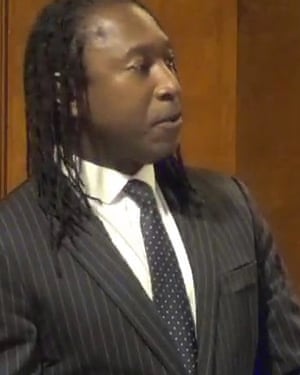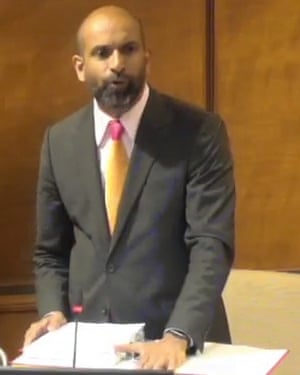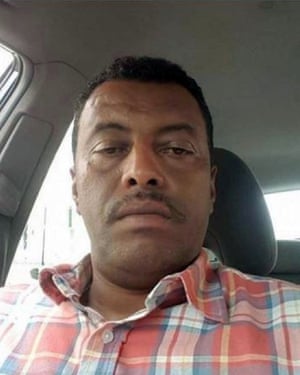Mansfield says the Grenfell Tower fire was “foreseeable”.
He says there are remarkable similarities between the Grenfell Fire and the fire at Lakanal House, in south London in 2009.
It started with a fault in an electrical appliance.
The detailed narrative verdict delivered by the jury determined that the fire spread up into flat 79 through the panels under the bedroom windows of flat 79, the aluminum frames having been distorted by flames from flat 65 creating gaps. These gaps permitted smoke to be pushed back into flat 79. This led to rapid and extensive smoke logging. The composite panels were replacements carried out during refurbishment.
The coroner criticised stay put policy and called for national guidelines from the government.
The failure to implement this was a betrayal of the jury and the coroner, Mansfield says.
He cites this passage from the Lakanal coroner.
Awareness that fire can spread downwards and laterally and above and adjacent to afire flat, and that insecure compartmentation can permit transfer of smoke and fire between a flat and common parts putting the lives of residents and others at risk.
Mansfield also cited the 2016 fire at the 18-storey Shepherds Court, in west London. The assistant commissioner of fire safety, Dan Daly warned that the panels used on the block were a contributory factor to the way the fire spread.
The inquiry hears Daly’s warning to councils:
“I am drawing this fire to your attention to highlight the external spread of the fire that occurred. My predecessor Assistant Commissioner Steve Turek wrote to housing providers in March 2009 about a variety of matters.... One of those was replacement double glazing and the associated replacement of spandrel and filler panels on the external faces of blocks of flats with floors above 18 metres in height. In this case we believe such panels were a contributory factor to the external fire spread.”
“In the light fires that have occurred I would urge you to consider carefully your arrangements for specifying, monitoring and improving all aspects of future replacement and improvement to building facades Contracts for the provision and installation of replacement elements of building facades including insulation, replacement double glazing and associated spandrel and infill panels must ensure compliance with ALL parts of Part B if they are to secure safety...”
Unless there is a change in mindset from the construction industry nothing will change, Mansfield says.
Moore-Bick should nudge and encourage the firms involve to disclose more, Mansfield.
He calls for an independent regulatory body to oversee the construction industry. This would challenge the mindset of non-compliance, he says.
The removal of combustible cladding on 306 high rise tower blocks across the UK is too slow, Mansfield tells the inquiry.
He points out that the £400m needed to replace the cladding is coming out of the social housing budget.
Meanwhile new high rise residential buildings are still being constructed.
In that context it is of A1 importance that non combustible material should be used on such blocks, Mansfield says.
There should be an urgent moratorium on the use of combustible material on high rise blocks.
Mansfield sets out possible early recommendations in three areas.
The first is to challenge the compliance mindset.
Second is identifiable safety measure that can be recommended now.
Third is the stay put policy.
Mansfield attacks the Red Tape Initiative which met on the day of the fire to discuss cladding. He describes this group of group “grandees” as intent on dismantling EU regulations considered a hindrance to profit making.
The group zeroed in on the Construction Products Regulation: regulation intended to harmonise the quality of construction materials, including external cladding across the European Union, to ensure safety. This was regulation designed to limit the generation and spread of fire and smoke - regulation that has direct relevance for fires such as the one at Grenfell Tower.
Such was the thinking of the dominant power brokers, during the dying embers of Grenfell Tower. In this atmosphere, safety regulation was sneered at as “red tape folly;” and dismissed as “expensive” and “burdensome.” Put simply, the prevailing orthodoxy was one of profit before safety.
He attacks the arrogance of the group and says it graphically illustrates that the mindset still exists today. It is reflected in the reticent responses so far from the companies involved in the refurbishment, Mansfield says.
Mansfield calls for early safety recommendations

Michael Mansfield QC, also representing the G10 group of bereaved, survivors and relatives reminds us that Theresa May set up the inquiry to ensure that no stone was left unturned.
He calls for urgency and reminds Moore-Bick of his hope to have an interim report published by the Easter that has just passed.
Delay risks kicking the report into the long grass, Mansfield says.
The public should not have to wait for recommendations that are obvious during the first phase of the inquiry. He urges Moore-Bick to reconsider the division between parts one and two of the inquiry so recommendations can be made at an earlier stage.
This will help those who have remained silent so far to reconsider, Mansfield claims.
The most obvious concerns could form recommendations as early as this summer. This is vital for the safety of the nation, he says.
This is an imperative, Mansfield says. He cites the example of the Taylor report into the Hillsborough tragedy and the sea change of all seater stadiums introduced in time for the following season.
Updated
Thomas say one of the survivors he represents was Elpidio Banifacio a blind elderly man who lived on the 11th floor.
On the night of the fire when his relatives rang 999 four times thye were told to tell him to get out if he could.
He could not as it was. Let us reflect upon what that means, he was condemned to die.
Thomas called for panel members on the inquiry to reflect the ethnic make up of the tower.
The public and our clients have a right to know that the deaths in the fire were not in vain, Thomas says.
He ends as he began with a quote from Martin Luther King:
Every step toward the goal of justice requires sacrifice, suffering, and struggle; the tireless exertions and passionate concern of dedicated individuals
The inquiry pauses for a break
Thomas describes the Grenfell block as a “vertical village” of people who make a valuable contribution to society.
He said the victims included architects, a carer, a chauffeur, a contract managers, and a chef.
He says:
The concept of a vertical village we suggest is apt because it simply means what we remember from a bygone age of an old fashioned ‘community’.
Thomas also says the legacy of the inquiry should be a “zero-risk approach to fire safety in tower blocks”.
Specifically he asks why some of the residents with disabilities were allocated flats on the top floors of the block. And why there were no fire hoses long enough to extend to the upper floors.
And he raises the charged issue of whether the refurbishment of the block was an attempt to gentrify the area.
“The question must be asked whether the refurbishment was simply about beautifying the tower, it not lost that the building in its previous form may have been considered an eyesore to some of the wealthier residents in the borough. It is a legitimate question to ask whether the money spent on the tower was not for the residents but for some of the more wealthy people living in the borough, so that the tower was more aesthetically pleasing to them.”
Thomas urges the inquiry to recommend enshrining in law the right to adequate housing.
He says:
More than anything the Grenfell Tower disaster was a profound breach of the universal human right to an adequate home.
There can be little doubt that had the residents of Grenfell Tower been able to directly enforce their rights to an adequate home in court then at least some of the fire risks that now we know were present on 14 June 2017 would have been identified and rectified before they came to pass with such awful consequences.
Thomas claimed that Shah Ahmed, chair of the leaseholders associations asked the council to conduct a full health and safety audit of the Grenfell Tower two weeks before the fire.
The inquiry will be perceived as a whitewash if the bereaved families can’t ask questions of the authorities.
Thomas claims the failures of management of Grenfell stemmed from the way social housing was stigmatised.
Social housing outside the private sector was important for all people particularly for people of colour, because market choice for people of colour was limited due to discrimination, Thomas says citing his own family background,
The stigma of social housing needs to be debunked, Thomas says.
He adds:
The Inquiry knows that the occupants of Grenfell Tower and the estate of which it was part were mixed and as varied as the population of the great city in which we all live. A significant number of people owned their own homes. But the perception was there: council housing is for those who fail in life. People who need to be managed, not embraced or admired. Desperate people without the agency to improve their lives: the destitute, the disenfranchised, vulnerable and voiceless. Descriptions not of people themselves, but of what society has done to them. This attitude and stereotyping is what allowed the cost cutting and the use of deadly materials to become normalised.

Leslie Thomas QC, representing in the inquiry’s jargon G10 of the BSRs (bereaved, survivors and relatives) urged the inquiry to expose wrong doing.
We want the inquiry to focus on the refurbishment, cladding, inadequacy of the safety measure and “gross mismanagement of the building by the TMO” and treatment of residents by the “corporates”.
He acknowledged there may be criticism of the fire fighters, but these are not the primary issue.
Those responsible should hang their heads in shame, Thomas says.
Thomas says one of his clients described the block as “death trap that looked like a pretty private block”.
He adds: “As for the corporates, silence speaks more than thousand words”.
Attempts to obscure the truths will be met with unwavering resistance, Thomas says.
The state has allowed a culture of corporate immunity to take root, he claims. The inquiry should mark the beginning of the end to this culture.
Menon backs Imran Khan QC’s claim on Tuesday that institutional racism could have been behind the failures of Grenfell Tower.
23 different countries were represented among the bereaved, he points out. It was political as it gets, he said. The fire must speak truth to power.
Sir Martin Moore-Bick, chair of the inquiry, briefly intervenes after someone from the public gallery shouts out backing Menon. He also stops people applauding Menon’s statement when it finished.
Updated

Kebede bought the Hotpoint fridge freezer new. It had not been repaired or tampered with. The fire was accidental and Kebede bears no responsibility for the fire or its spread, Menon says.
He points out that each year there are 300 fires involving fridges or freezers.
The cause or origin of the fire is not the key question, the issue is how it spread so quickly, Menon says.
Kebede hopes for the inquiry are similar to the other survivors and bereaved families. He hopes it will deliver real justice for the victims and real accountability for those responsible for the refurbishment, Menon says.
The fire was entirely foreseeable, Menon adds. He hopes the inquiry will make a statement to make it clear that he was blameless for the fire. The inquiry needs to set the record straight, and thank him for raising the alarm. This will stop the racist slurs against Kebede.
Menon cites a Guardian comment article questioning the need for a public inquiry. He rejects this.
Kebede did not hesitate in contacting the police on the night of the fire, Menon says.
He has cooperated fully with the police as a witness. He is not a criminal suspect, Kebede lawyer.
After the fire, Kebede was subjected to a campaign of harassment by the media. He and his friends were offered cash for their stories. He refused.
The media intrusion has had serious consequences for Kebede and his family. The police suggested witness protection. He felt “terrified” by the prospect of giving oral evidence to the inquiry, Menon said.
There has been a renewed interest in Kebede since his emergency call was played to the inquiry, Menon says. He appealed to the media to leave Kebede alone.
Kebede loved living in Grenfell Tower after moving to the UK from Ethiopia, and the strong bonds with neighbours, the inquiry heard.
But he hated the refurbishment of the block and the disruption this caused.
'Nasty lie' to report Kebede packed a bag before fleeing fire
Rajiv Menon QC, representing Behailu Kebede, in whose flat the fire started, begins by saying that Kebede had been living in flat 16 for 25 years when he was woken by a fire alarm.
He acted quickly and banged on bed room doors of his neighbours on the fourth shouting “fire fire”.
All he had on him were his clothes and phone. He left without his shoes or wallet or car keys.
It was “nasty lie” to falsely report that Kebede packed a suitcase before leaving, Menon said.
Welcome to day 10 of our continuing live coverage of the public inquiry into the Grenfell Tower fire.
Today is due to start with an opening statement from Behailu Kebede, in whose fourth floor flat the fire started. It will be presented by his lawyer, Rajiv Menon QC.

The inquiry has already heard Kebede’s upsetting phone call to the emergency services to raise the alarm about the fire. Parts of his statement were used in an account by a fire expert of how the fire started, which was presented to the inquiry on Monday, but this is the first time inquiry will hear directly from Kebede, via his lawyer.
An outline of Kebede’s statement [pdf] says it will explain why “he bears no responsibility, directly or indirectly, for the fire”.
It says it will also discuss the way he was hounded by the media after the fire and the impact on him of this “false and intrusive reporting”. Kebede will claim that the tower became an increasingly dangerous place to live and that the fire was “an entirely foreseeable catastrophic event waiting to happen”.
With a total of 10 opening statements, today’s schedule is the most packed this week.
Grenfell Inquiry (@grenfellinquiry)
This is the provisional schedule for the week commencing 4 June. https://t.co/xSJwKxjoCZ pic.twitter.com/hIaj2QZ0V1
June 1, 2018
They include statements from Kensington and Chelsea council; the tenant management organisation (TMO) that ran the tower; several of the firms involved in the refurbishment of the block; and the mayor of London, Sadiq Khan.
Most of the organisations involved have already submitted statements ranging in length from a page in the case of Celotex [pdf] , the firm that manufactured the combustible insulation used in the cladding of the block, to 10 pages from Arconic [pdf], the US company that made the panels.
Arconic’s statement claims its panels were not responsible for spreading the fire, despite expert evidence to the contrary. Celotex expressed “its deepest sympathy to the families of all those who lost their lives as a result of the fire”.
It is unclear whether more details will be given when the statements are read out. The inquiry is due to begin at 10am.